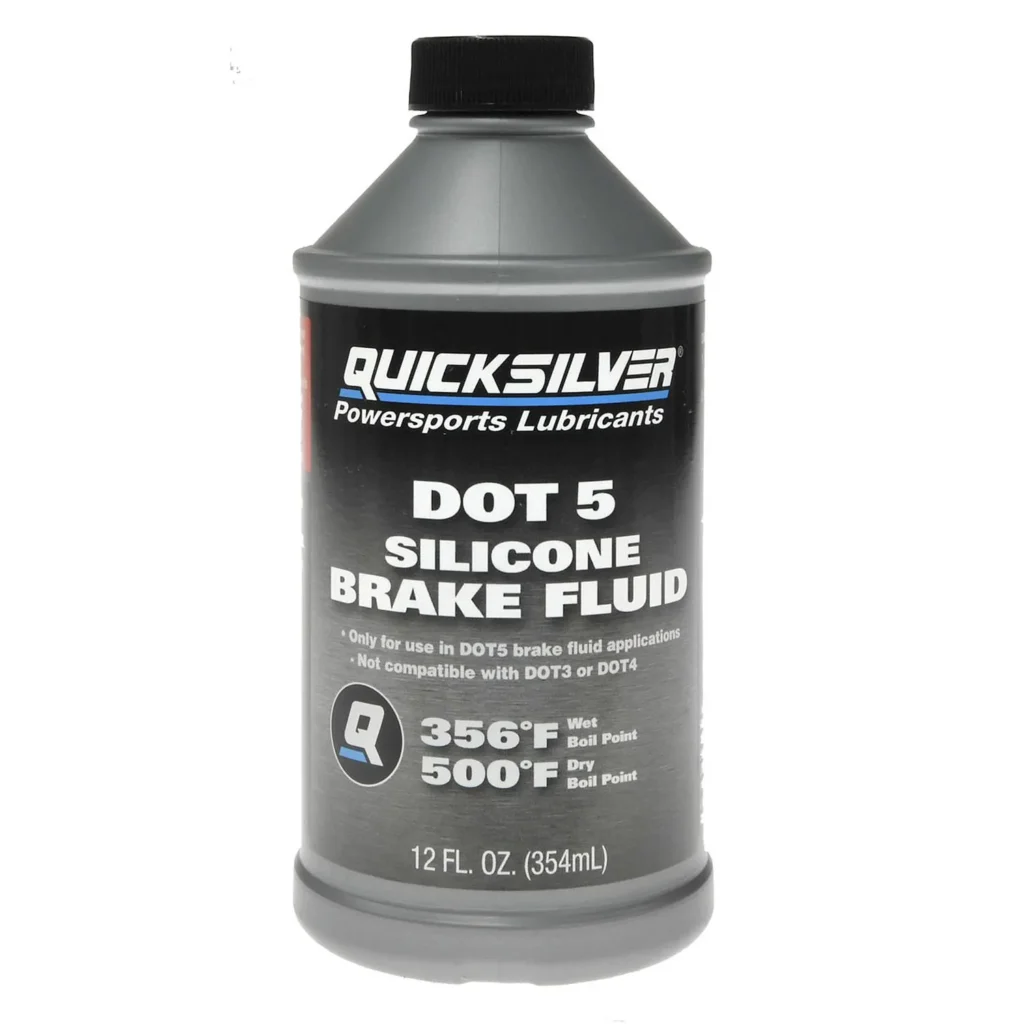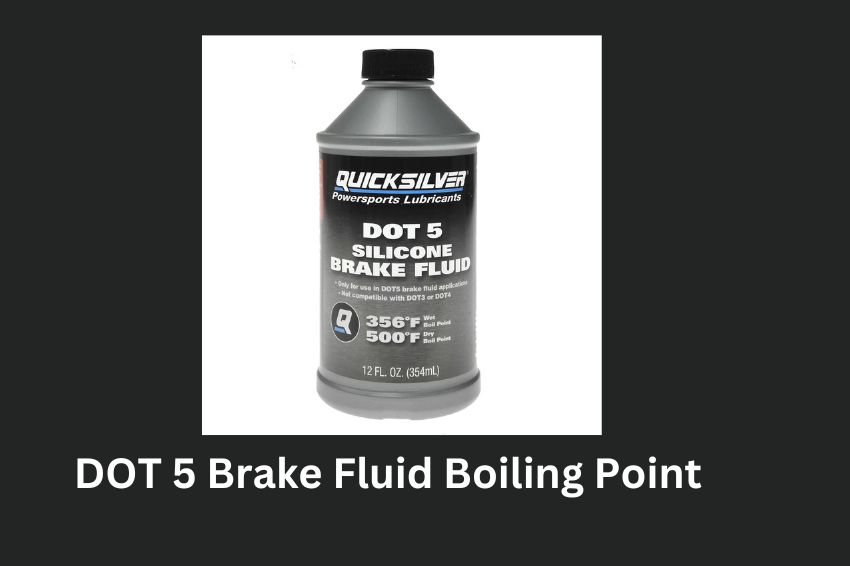DOT 5 brake fluid boils at around 260°C (500°F), and It’s a silicone-based fluid with high-temperature stability.
DOT 5 Brake Fluid Boiling Point Vs. DOT 3 And DOT 4
| Feature | DOT 5 | DOT 3 | DOT 4 |
| Dry Boiling Point (°C) | 260 | 230 | 260 |
| Wet Boiling Point (°C) | 180 | 140 | 155 |
| Composition | Silicone-based | Glycol-based | Glycol-based |
| Hygroscopic? | No | Yes | Yes |
| Compatibility | Not compatible with DOT 3/4 | Compatible with each other | Compatible with each other |
| Applications | High-performance vehicles, racing, hot climates | Standard hydraulic braking systems | Performance driving, some high-performance vehicles |
DOT 5 brake fluid has the highest boiling point (both dry and wet) because it’s made from silicone.
This makes it ideal for high-performance applications and driving in hot climates.
However, DOT 5 is less compressible than other brake fluids, which can slightly affect the braking feel.
It’s also important to note that DOT 5 is not compatible with DOT 3 or DOT 4 fluids.
DOT 3 and DOT 4 are glycol-based brake fluids that have similar dry boiling points.
Yet, DOT 4 has a higher wet boiling point, which means it performs better in humid environments.
Both DOT 3 and DOT 4 are compatible with each other and are suitable for most standard braking systems.
Why Does DOT 5 Brake Fluid Have A Higher Boiling Point?

Unlike DOT 3 and DOT 4, which are made from glycol, DOT 5 is based on silicone, which is what gives DOT 5 its higher boiling point.
To understand this better, let’s break it down.
Glycol, the base of DOT 3 and DOT 4, is good at absorbing water, which is a problem because water drastically lowers the brake fluid’s boiling point.
This is why you’ll often hear about “wet” and “dry” boiling points.
Wet brake fluid boils at a much lower temperature due to water contamination.
Silicone, on the other hand, doesn’t mix with water, which means DOT 5 brake fluid is naturally resistant to moisture.
As a result, its boiling point stays consistently high, even in humid conditions or after absorbing small amounts of water.
This is a major advantage, especially in hot climates or during intense driving conditions.
With that said, a higher boiling point is important for brake performance.
When brake fluid gets too hot, it can vaporize, causing the brake pedal to feel spongy or even fail completely.
This is known as a vapor lock.
DOT 5’s ability to resist vaporization under extreme heat makes it a top choice for high-performance cars, racing, and driving in hot climates.
However, while DOT 5 is good in heat resistance, it has other characteristics that might not be ideal for every situation.
For instance, DOT 5 is less compressible than glycol-based fluids, which can affect brake feel.
So, while DOT 5’s higher boiling point is a significant advantage, it’s essential to consider all factors when choosing the right brake fluid for your vehicle.
